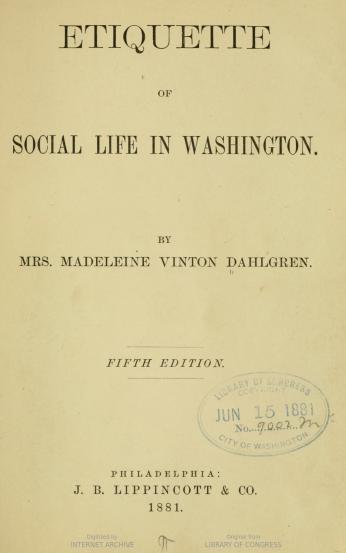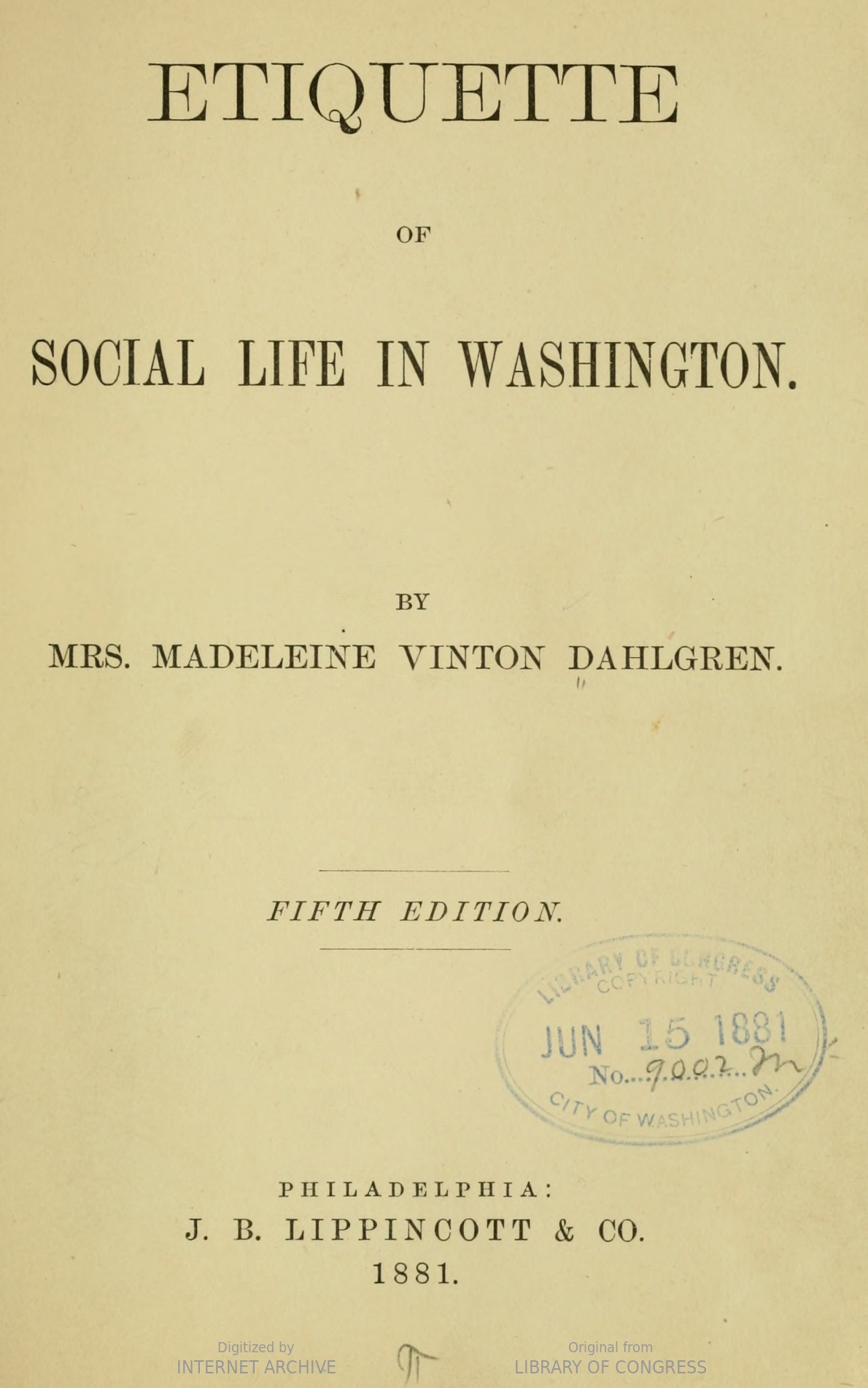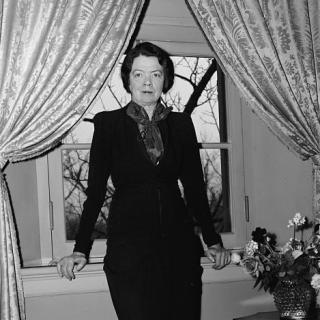High Society Impacts of the Presidential Succession Act
Before 1886, presidential succession called for a special election if the President, the Vice President, the President pro tempore of the Senate, and the Speaker of the House all died. This left a lot of Washington hostesses high and dry. In the District, where official life totally overlaps with social life, knowing whether the Chief Justice took precedence over the Secretary of State is just as important to the President’s wife as it would be to the President.
So, before the 1886 Act established a detailed list of who’s the who-est in Washington, how did the ladies do it? Usually with complicated treatises on political theory.
The trick for these Republican mothers was to uphold the ideals of equality while at the same time overtly declaring certain individuals more important than others.
Consider the following passage from The Manners that Win:
"Our staunch republicanism might acknowledge with reluctance that the President and his wife are the first gentleman and lady of the land;” but to accord socially to both that deference and respect which the Constitution gives to the Executive in the exercise of his high duties is no sacrifice of social independence."[1]
Some referred to the effort to define precedence as an effort to create a “Republican Court.” Mrs. Madeleine Vinton Dahlgren, in Etiquette of Social Life in Washington, had this to say about such terms:
We object to the hybrid term, the “republican court,” which we so often hear. It is senseless, and an anomaly; or if it have a meaning, it is still more to be deprecated, as incompatible with the spirit of the framers of our excellent Constitution. We have no “Court Circle,” no more do we expect to remain a republic and at the same time ape “Court” manners. We have a social as well as political autonomy.
After the defense that Dahlgren and other ladies were not attempting to create a social hierarchy, the book turned to that purpose, presenting the different arguments for precedence such as:
There is an argument that the Senator represents State sovereignty, and that the dignity is consequently superior to that of the Cabinet officer, whose nomination the Senate confirms by its vote, and who is appointed constitutional aid and adviser of the President. Yet the Cabinet officer is something more than this; for, presiding over an entire Department o the Government, he possesses both power and dignity of function.[2]
Mrs. Dahlgren believed that a convention of the city’s leading ladies should be held in order to determine, once and for all, the order of who was most important in Washington. She was no doubt pleased that the Presidential Succession Act of 1886 contained its own list that was longer than four names. After 1886, ladies of the capital were able to greet and seat guests according to the act. The Cabinet, with the Secretaries in the order which their positions were created, replaced the President pro tempore and the Speaker of the House in succession.
The White House Book of Etiquette, published after the act, had this to say about precedence:
The order of seating these Cabinet members and their ladies at a Cabinet dinner has been finally reduced to almost an exact science, but it has taken years of severe mental labor to accomplish anything like a satisfactory rule that will meet inexorably all contingencies. [It is done] according to the Presidential Succession bill.[3]
It’s not every day that an act of Congress so directly affects who you invite to dinner! The 1886 Act held until 1947, when the current succession plan was put in place.






![Sketch of the mythical fuan by Pearson Scott Foresman. [Source: Wikipedia]](/sites/default/files/styles/crop_320x320/public/2023-10/Goatman_Wikipedia_Faun_2_%28PSF%29.png?h=64a074ff&itok=C9Qh-PE1)












